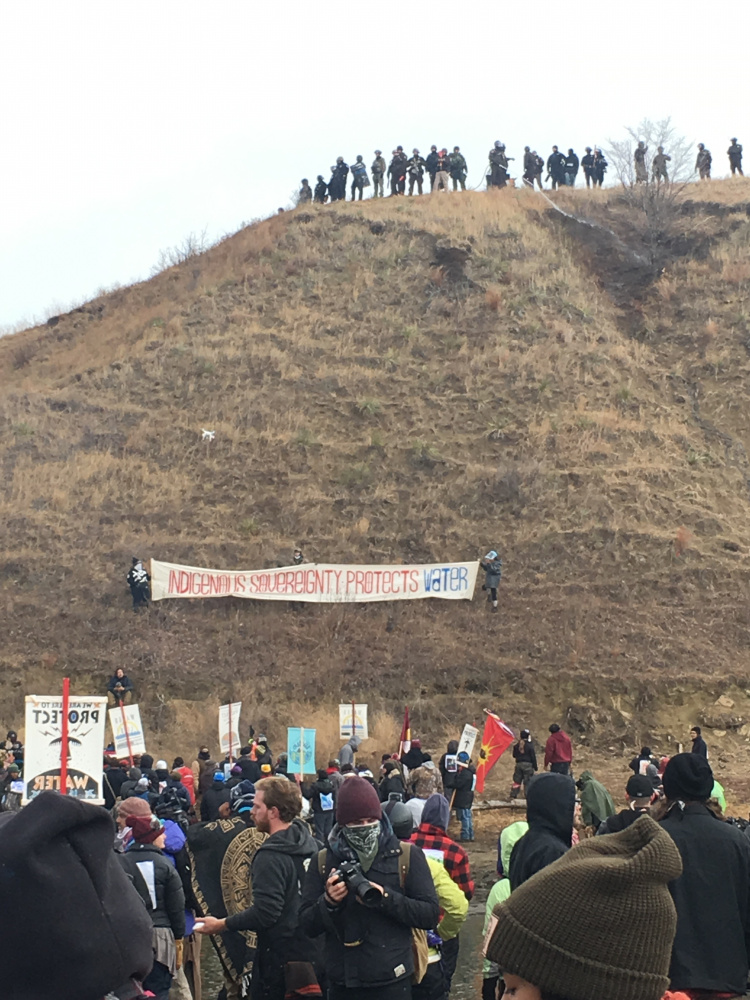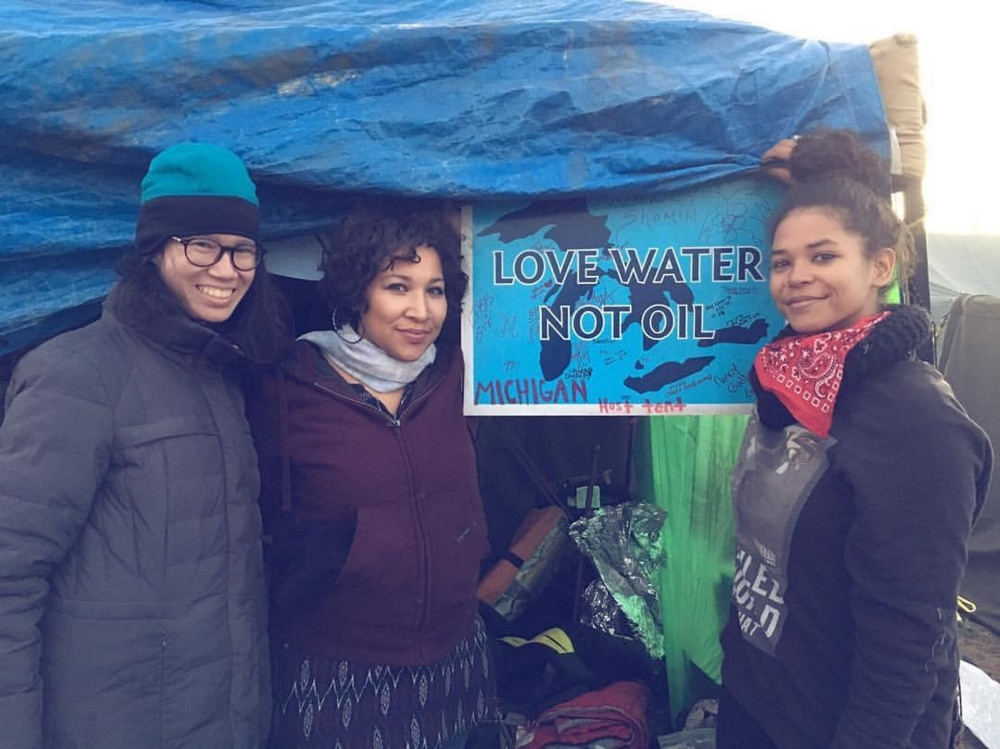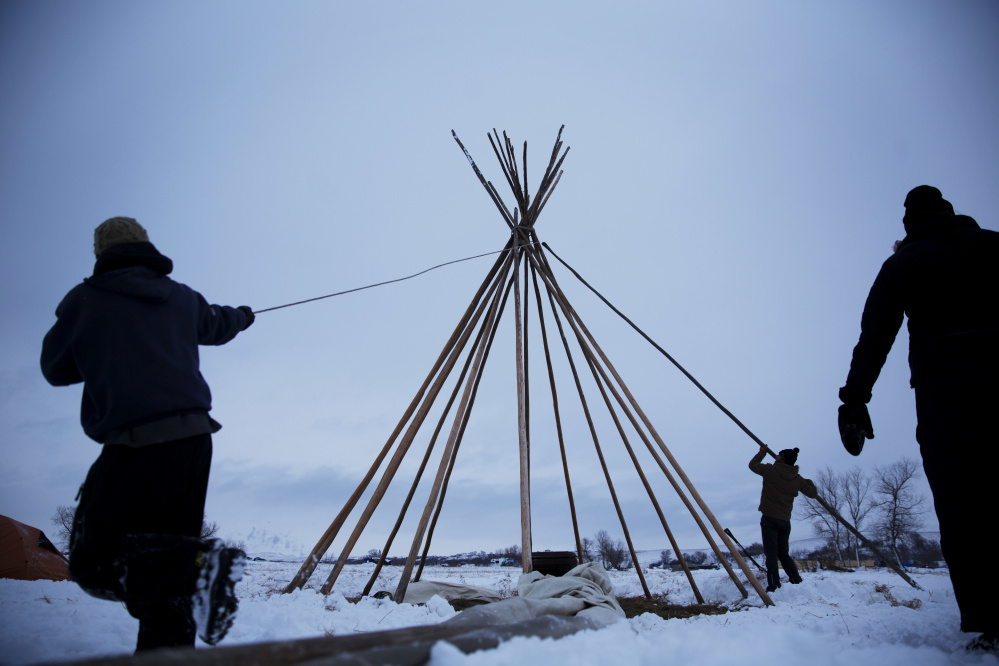While many students left Western Michigan University in Kalamazoo to return home for turkeys and pumpkin pies on Thanksgiving break, senior May Ye traveled to North Dakota to stand in solidarity with the Standing Rock Sioux.
Ye, 22, grew up in Waterville and is passionate about social justice. When the native Mainer learned of the pipeline and the protest, mostly through social media, she said she decided she had to go.
“I definitely was not expecting to have a vacation of any sort,” Ye said. “I knew I was going to have to do hard work.”
The Standing Rock Sioux Tribe, allies from hundreds of other tribes and other protesters of the pipeline have been encamped for months to block construction of the Dakota Access pipeline, a $3.8 billion project that would connect shale oil fields in North Dakota with refineries in southern Illinois. The Standing Rock tribe said the pipeline project, nicknamed DAPL, would threaten both sacred burial sites and water resources.
On Sunday, the U.S. Army Corps of Engineers announced it won’t grant an easement for the pipeline in southern North Dakota, The Associated Press reported. The decision is a victory for the several thousand camped near the construction site.
“It’s deeply exciting to know that when we bring masses of people together in nonviolent protests for something, we can win,” Ye said Sunday night. “This is really exciting news and it’s thanks to every single person that’s gone out there.”
However, Ye added that the work at Standing Rock isn’t done yet. “We still need to fight. We still need to make sure everything follows through,” she said.
The federal government had given protesters until Monday to leave the federal lands north of the Cannonball River, citing concerns about the oncoming winter and increasingly violent clashes between protesters and police, the AP reported.
This weekend, more than 2,000 U.S. military veterans traveled to North Dakota to form a human wall between protesters and law enforcement.
If finished, the pipeline would carry up to 570,000 barrels of crude oil every day and could create 8,000 to 12,000 local jobs during construction, according to information from its parent company, Texas-based Energy Transfer Partners.
‘THE DEEP END’
Ye left for the camp, Oceti Sakowin, which means Seven Council Fires camp, on Tuesday before Thanksgiving and stayed through the following Sunday. While she prepared for the experience, it still affected her greatly.
“The most important thing I took out of this was just witnessing such solidarity and community,” she said. “I will keep the spirit of these people with me, and that will overshadow any fear and anger that I have toward the police.”
Ye was referring to clashes between activists and the police. On Nov. 20, police used water cannons, rubber bullets and chemical sprays against protesters who were trying to remove barricades on a bridge that would have prevented emergency vehicles from accessing the camp.
Ye said she was nervous about her trip after she heard the reports of what happened that day.
“But I still felt confident that this was what I had to do,” she said.
Ye is Jewish and said she feels “a connection with the people at Standing Rock as a Jew who stands in solidarity with the people in Palestine.” She sees similarities in the two tales of indigenous people’s lands being stripped away, she said.
A senior at Western Michigan University majoring in piano performance, Ye is applying to rabbinical schools with a feminist and progressive emphasis. She said she plans to work for social justice through a Jewish lens.
Ye has participated in small demonstrations and protests before, she said, but nothing “with this sort of military presence.” Since she plans to follow the path of social justice, though, she decided she had to become involved in the standoff at Standing Rock. Ye felt like she was “throwing myself in the deep end,” she said.
Ye did “direct action” work standing on the front lines confronting police. Before anyone was allowed to do direct action, though, Ye said the Sioux tribe required people to go through “nonviolence direct action training.” According to Ye, the protesters, who call themselves “water protectors,” were very peaceful and prayerful.
“One of the chants we were saying was, ‘We have prayers, you have guns,’ ” she said.
The protesters also wore goggles and face masks, which Ye said was in anticipation of water cannons or pepper spray.
“The police were very manipulative,” she said. “They were definitely trying to taunt us with those water cannons.”
‘WE’RE ALL UNITED’
While at the camp, Ye met people from all over the country, as well as countries such as France, New Zealand and Sudan.
“I heard there was a great influx during Thanksgiving because people had time off,” she said. “I would say probably every state (had people) there.”
Ye traveled with two indigenous women from Michigan, one of whom had already been to Standing Rock. She said she was grateful to them for helping her prepare and understand how to act. For example, women were asked to wear long skirts at camp during ceremonies out of respect.
Ye said the indigenous people at Standing Rock promoted peace and are “the most beautiful people I’ve ever seen in my life.”
“When people prayed, they prayed for police and DAPL workers,” she said. “Because we care for everyone. It doesn’t matter what side you’re on, we’re all human. And that’s what Standing Rock demonstrates: We’re all united.”
Send questions/comments to the editors.






Success. Please wait for the page to reload. If the page does not reload within 5 seconds, please refresh the page.
Enter your email and password to access comments.
Hi, to comment on stories you must . This profile is in addition to your subscription and website login.
Already have a commenting profile? .
Invalid username/password.
Please check your email to confirm and complete your registration.
Only subscribers are eligible to post comments. Please subscribe or login first for digital access. Here’s why.
Use the form below to reset your password. When you've submitted your account email, we will send an email with a reset code.